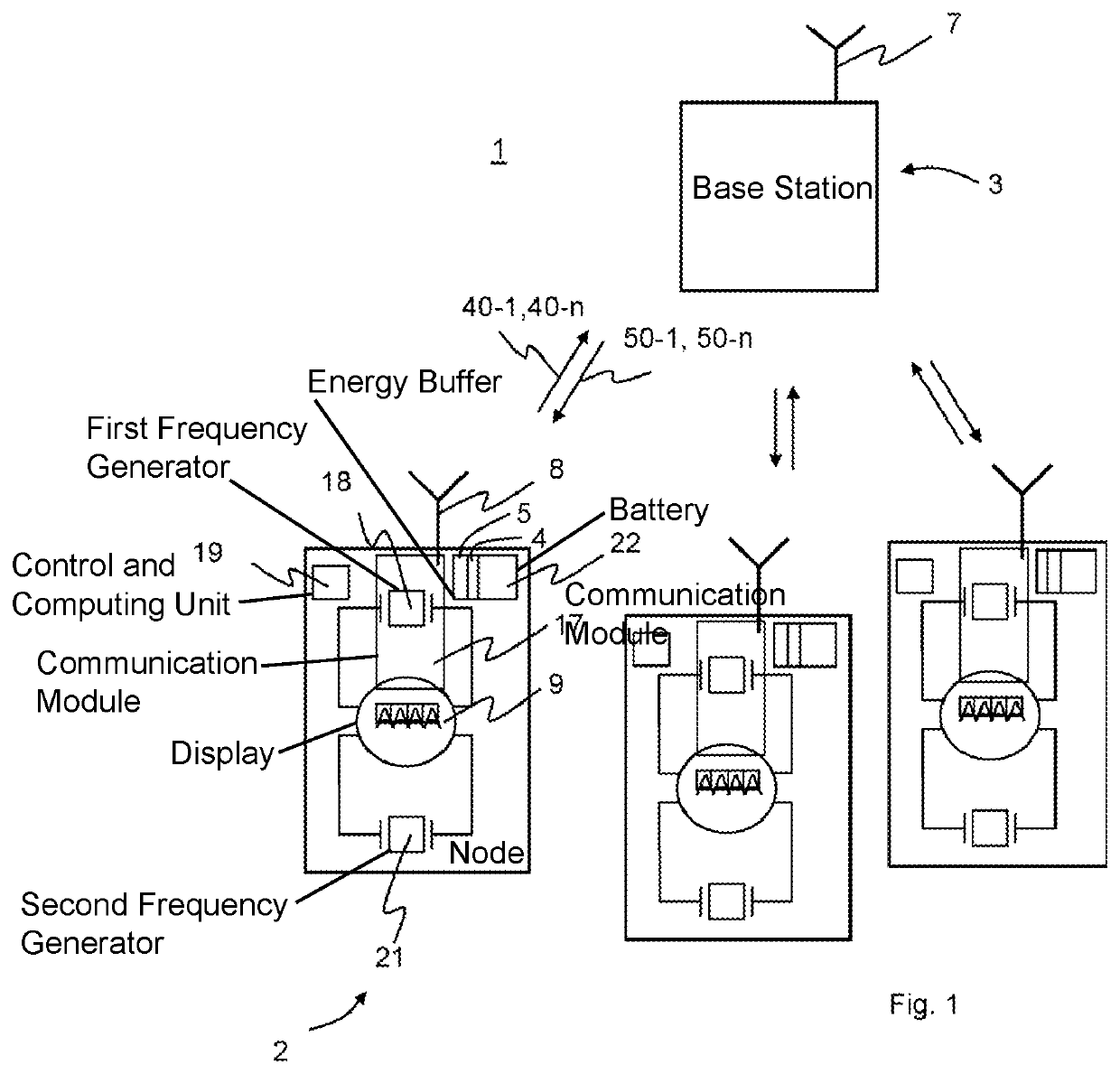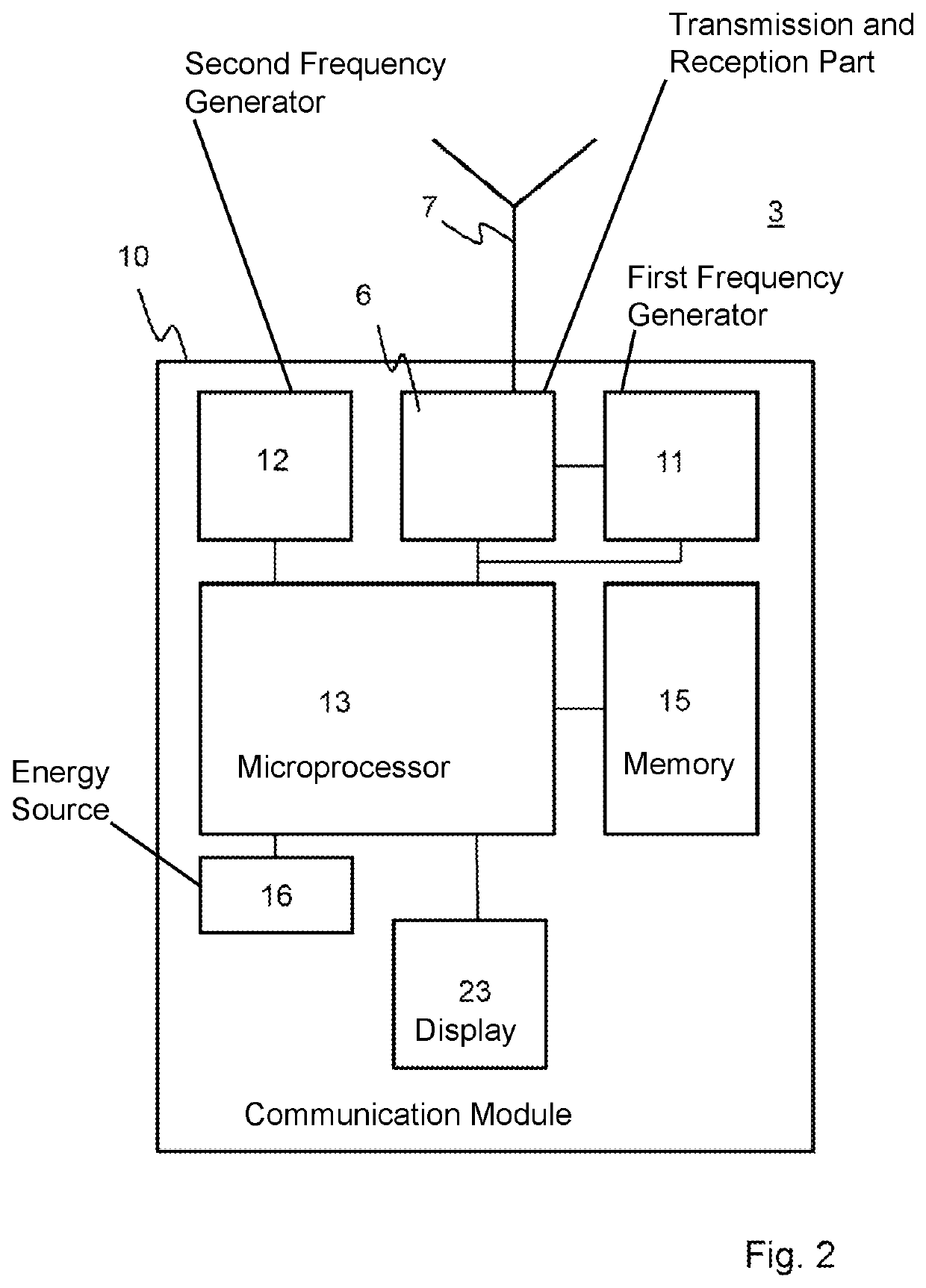Method for the bidirectional transmission of data, in particular sensor data, and radio-capable node
a data and radio-capable technology, applied in the field of transmitting data, can solve the problems of worse synchronization properties of individual data packets than synchronization, and achieve the effect of improving the reception quality in the downlink
- Summary
- Abstract
- Description
- Claims
- Application Information
AI Technical Summary
Benefits of technology
Problems solved by technology
Method used
Image
Examples
Embodiment Construction
[0041]Referring now to the figures of the drawings in detail and first, particularly, to FIG. 1 thereof, it is seen that reference numeral 1 denotes a bidirectional radio communication system, or radio communication network, that includes a base station 3, e.g. a so-called data collector, and a plurality of individual, autonomously operated nodes 2. The nodes 2 are for example sensor devices or meters of any type, for example water meters, heat meters, gas meters or electricity meters, or actuators. A common feature of these nodes 2 is that they have a communication module 17 with an antenna 8 and a control and computing unit 19. In addition, each node 2 has a first frequency generator 18 for generating a carrier frequency for the radio transmission and a second frequency generator 21 used for stipulating the times of transmission of data packets 40-1, 40-n in the uplink and for stipulating the reception windows for receiving data packets 50-1, 50-n in the downlink. The first freque...
PUM
 Login to View More
Login to View More Abstract
Description
Claims
Application Information
 Login to View More
Login to View More - R&D
- Intellectual Property
- Life Sciences
- Materials
- Tech Scout
- Unparalleled Data Quality
- Higher Quality Content
- 60% Fewer Hallucinations
Browse by: Latest US Patents, China's latest patents, Technical Efficacy Thesaurus, Application Domain, Technology Topic, Popular Technical Reports.
© 2025 PatSnap. All rights reserved.Legal|Privacy policy|Modern Slavery Act Transparency Statement|Sitemap|About US| Contact US: help@patsnap.com



